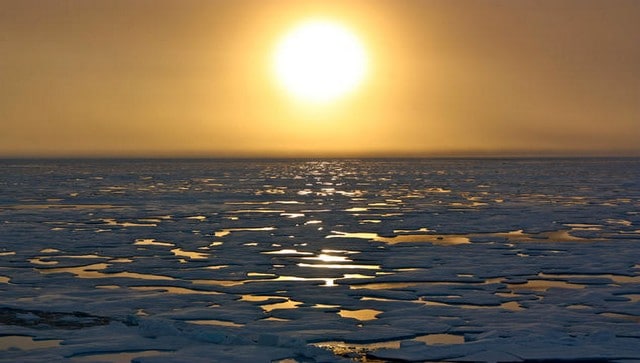Picture this: scientists in lab coats trying to reanimate viruses extracted from lands and lakes that had been frozen many years ago. Sounds no less than a plot of science fiction, right?
But it has happened and is very much a reality. A team of researchers from different parts of Europe examined samples collected from permafrost in Russia’s Siberia.
The new study has raised concerns about the thawing of permafrost – land that constantly remains below zero degrees Celsius – due to climate change. Researchers say that this may pose a new threat to humans and animals.
The study, which is yet to be peer-reviewed and is in the preprint stage, has been published on bioRxiv. As a part of the study, scientists have revived and characterised 13 new pathogens or what they have termed “zombie viruses” and this bunch includes one which is more than 48,500 years old.
Let’s take a closer look at the study.
The viruses that were uncovered
The team of scientists behind the study was led by microbiologist Jean-Marie Alempic from the French National Centre for Scientific Research. Ranging between the ages of 27,000 to 48, 500, awakening these viruses could potentially pose a threat to public health and further study is required to assess the dangers of the pathogens that remained unknown to mankind.
While conducting their study, researchers established that each of the viruses that have been extracted from the thawing icy cold surfaces of Siberia were distinct from all the known existing viruses in terms of their genome.
Also read: Explained: What is ‘Disease X’ that WHO believes can cause future pandemics?
The oldest of these “zombie viruses” has been identified as Pandoravirus yedoma which has set a record age for a frozen virus capable of returning to a state of infecting other organisms. During the early phase of its isolation process, the virus was visible under a light microscope.
A virus named Cedratviruses was extracted from Russia’s Lena River, the Kamchatka peninsula and from the mud flowing into the Kolyma River. One sample of Pithoviruses was even collected from a large amount of mammoth wool.
Although Pacmanviruses were recently associated with some cases of swine fever in Africa, scientists have now reported a new variant of this virus that was found in the frozen intestinal remains of a Siberian wolf and are 27,000 years old.
As permafrost continues to thaw as a result of increased temperatures due to climate change, it is yet to be determined how infectious these viruses can get once they are exposed to light, heat and oxygen.
Scientists flag concerns
The release of these largely unknown viruses from their icy slumber is bad news. The study also highlights the detrimental effects of climate change.
The researchers wrote, “Due to climate warming, irreversibly thawing permafrost is releasing organic matter frozen for up to a million years, most of which decomposes into carbon dioxide and methane, further enhancing the greenhouse effect.”

According to a report by Bloomberg, says that the biological risk of reanimating the viruses was, however, “negligible” due to the strains they have targeted which are mainly capable of infecting amoeba microbes. But the potential and eventual revival of a virus that could infect other organisms can be a real danger.
“But the risk is bound to increase in the context of global warming when permafrost thawing will keep accelerating, and more people will be populating the Arctic in the wake of industrial ventures,” they said.
“It is thus likely that ancient permafrost will release these unknown viruses upon thawing. How long these viruses could remain infectious once exposed to outdoor conditions, and how likely they will be to encounter and infect a suitable host in the interval, is yet impossible to estimate,” the scientists added.
Impacts of permafrost thaw
According to Natural Resources Defence Council, the impacts of the continued thawing of permafrost are widespread.
Nearly 85 per cent of the regions around Siberia, Canada, Greenland and Alaska sit atop a layer of permafrost. In the northern hemisphere, permafrost accounts for an estimated nine million square miles of land.
A recent study suggests that for every one degree Celsius rise in temperature, an additional 1.5 million square miles of permafrost could eventually disappear.
Defrosting can release harmful gases like carbon dioxide and methane into the air from the decomposed bodies of plants and animals which are essentially trapped in the ice and helps in preserving these global warming gases.
Thawing permafrost can also significantly alter existing landscapes by creating areas of sagging ground and shallow ponds. It can also make frozen soil more vulnerable to landslides and erosions.
With inputs from agencies
Read all the Latest News, Trending News, Cricket News, Bollywood News,
India News and Entertainment News here. Follow us on Facebook, Twitter and Instagram.
from The Awakening: How scientists have revived a 48,500-years-old 'zombie virus'
https://ift.tt/sGZ318S




0 Comments